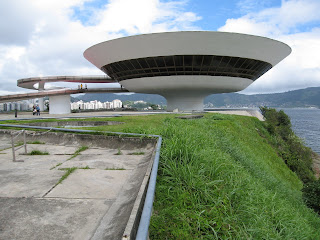Curitiba

Museu Oscar Niemeyer 'The Eye', Oscar Niemeyer, 2002
 Universidade Livre do Meio Ambiente, Domingos Bongestabs, 1992
Universidade Livre do Meio Ambiente, Domingos Bongestabs, 1992Eucalyptus trunks & recycled materials
Copacabana Beach
 Edificio Gustavo Capanema, Curbusier + Lucio Costa + others, 1947
Edificio Gustavo Capanema, Curbusier + Lucio Costa + others, 1947
 Petrobras Building
Petrobras Building
 Museu de Arte Moderna, Affonso Reidy, 1955
Museu de Arte Moderna, Affonso Reidy, 1955
 Museu de Arte Contemporanea de Niteroi, Oscar Niemeyer
Museu de Arte Contemporanea de Niteroi, Oscar Niemeyer
 Edificio Gustavo Capanema, Curbusier + Lucio Costa + others, 1947
Edificio Gustavo Capanema, Curbusier + Lucio Costa + others, 1947 Petrobras Building
Petrobras Building Museu de Arte Moderna, Affonso Reidy, 1955
Museu de Arte Moderna, Affonso Reidy, 1955 Museu de Arte Contemporanea de Niteroi, Oscar Niemeyer
Museu de Arte Contemporanea de Niteroi, Oscar NiemeyerEnjoy the photos, more to come later. Apart from the architecture Rio has the wildest street nightlife and samba clubs i've ever seen. However, I have no proof with photos.












